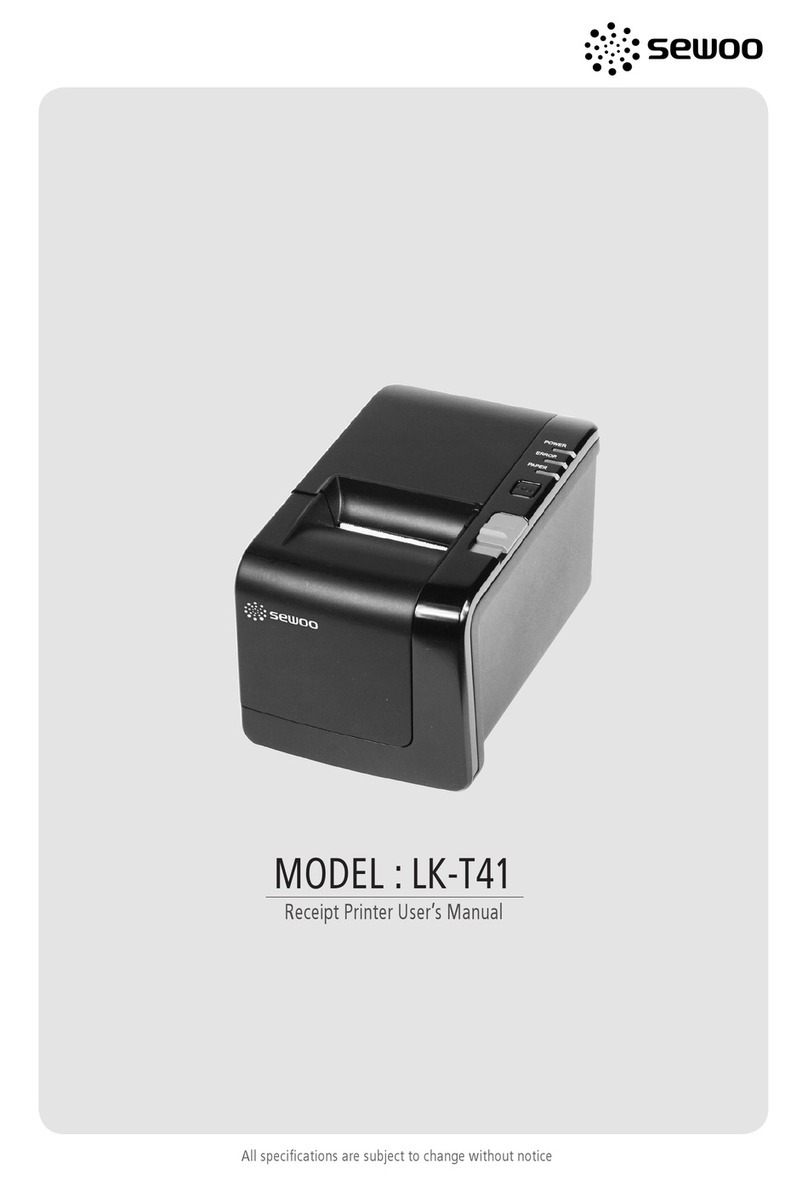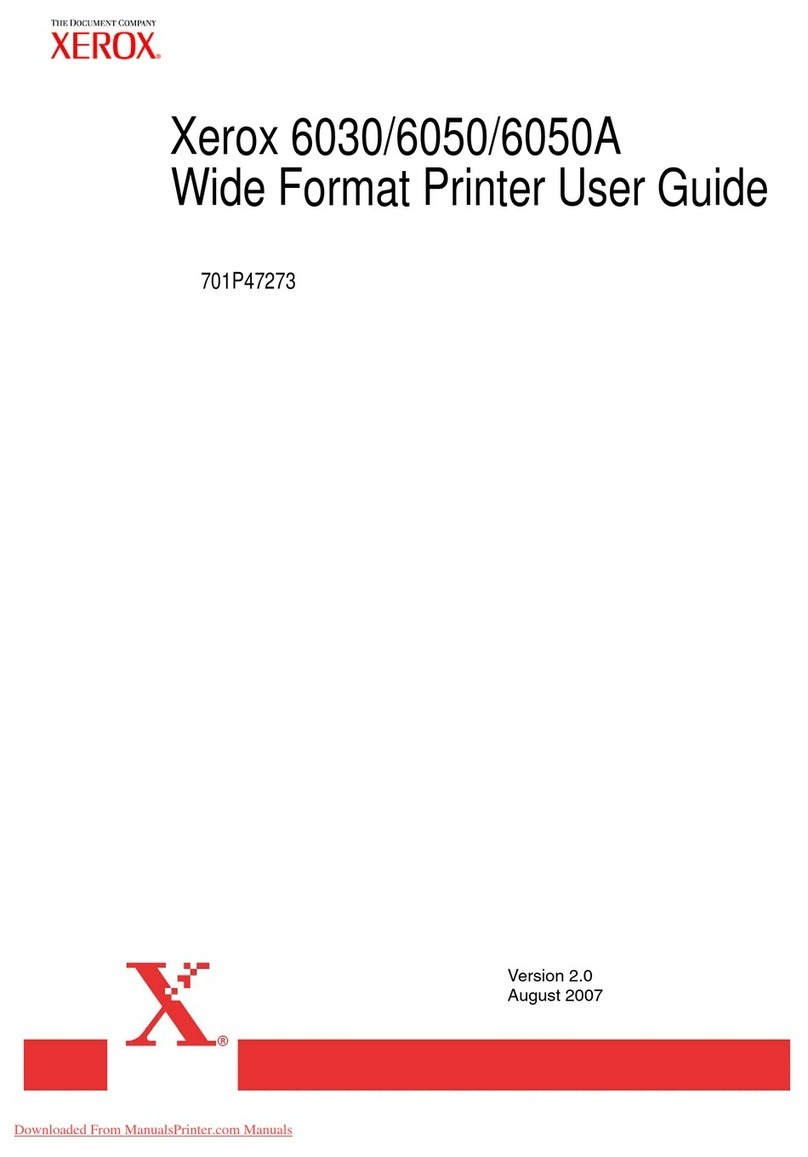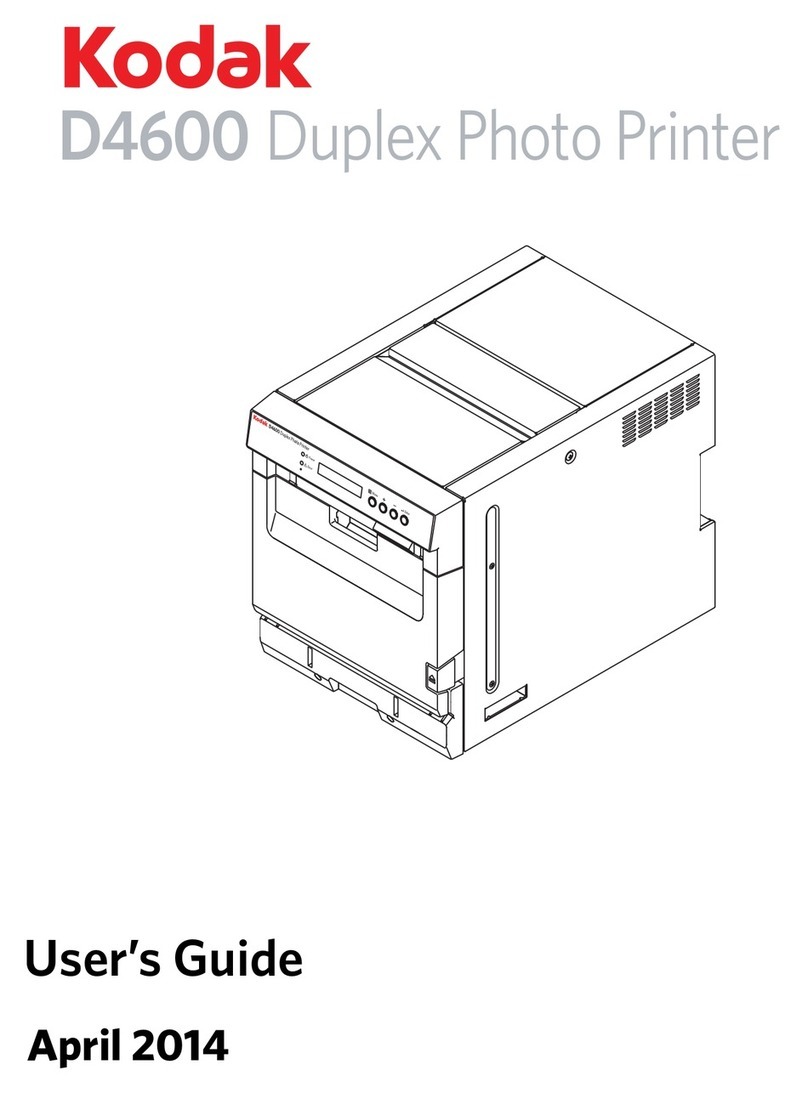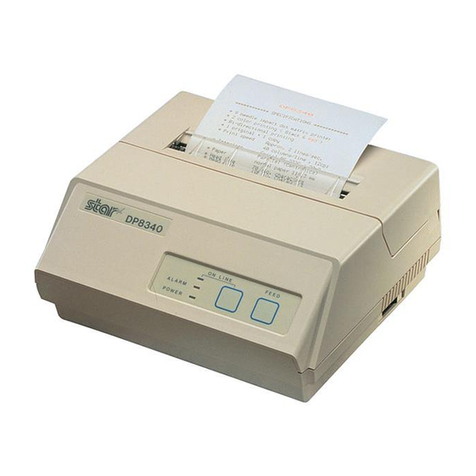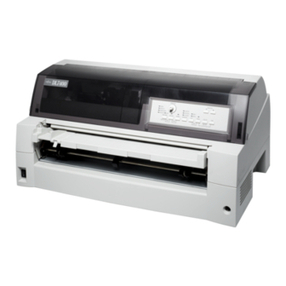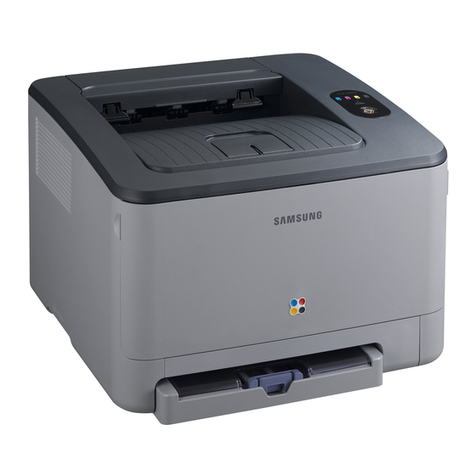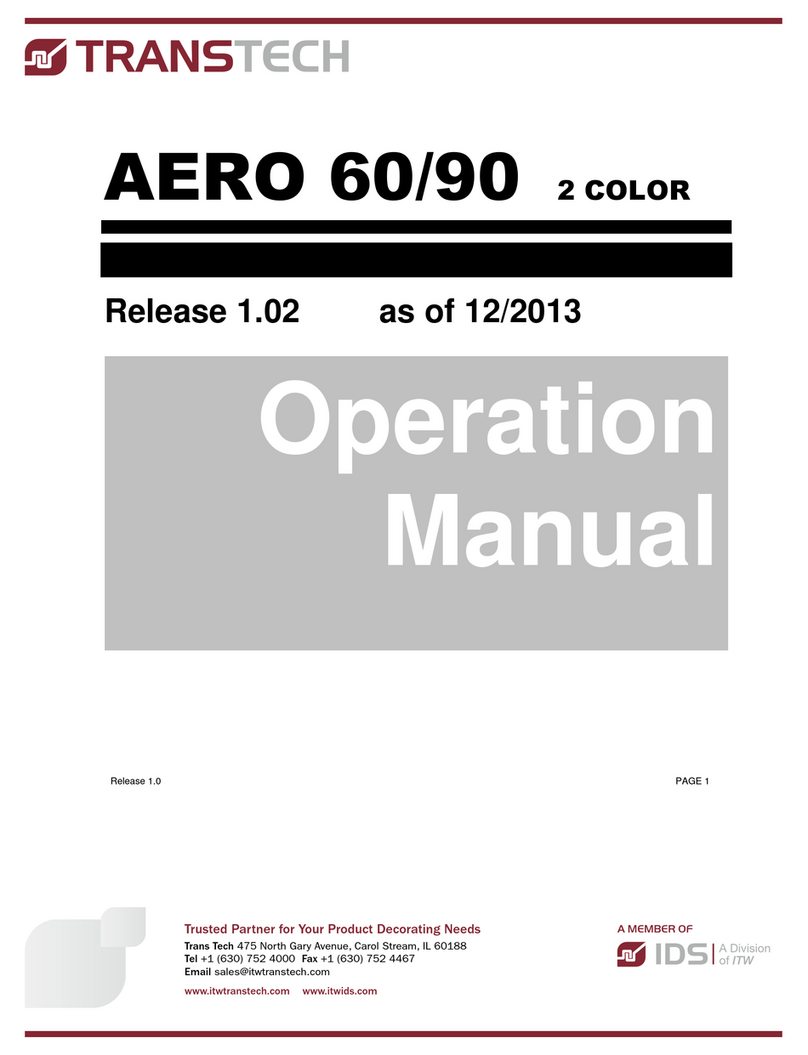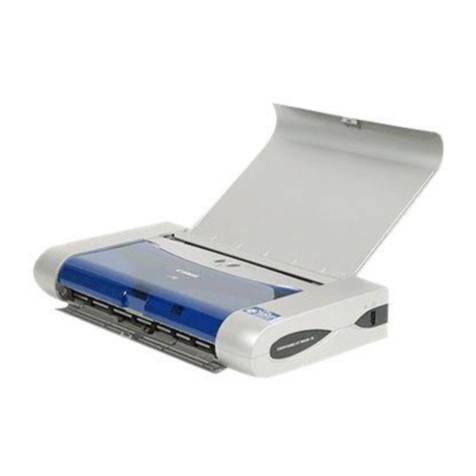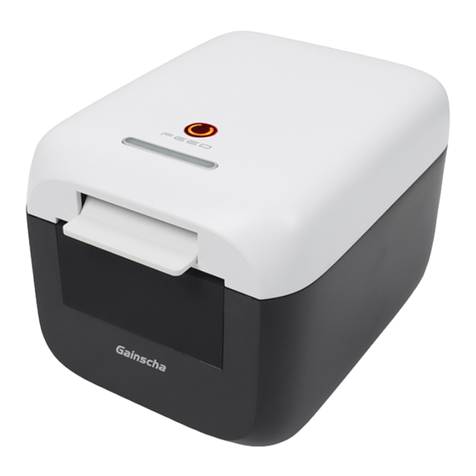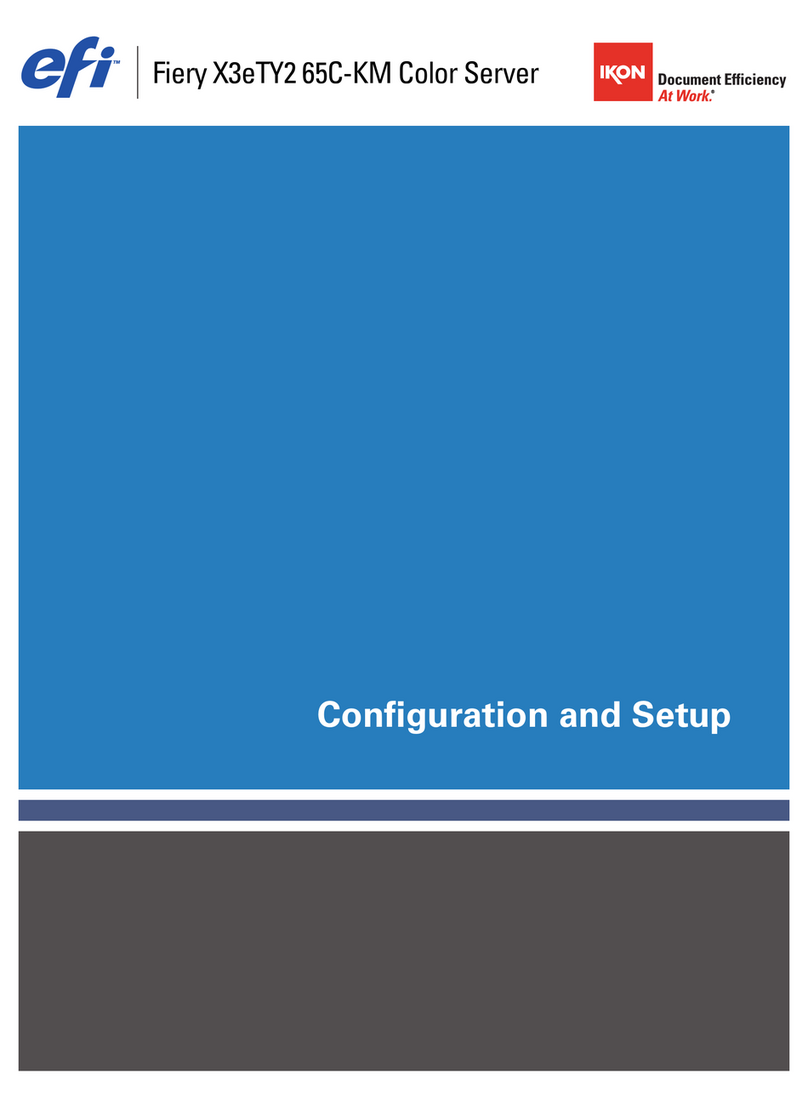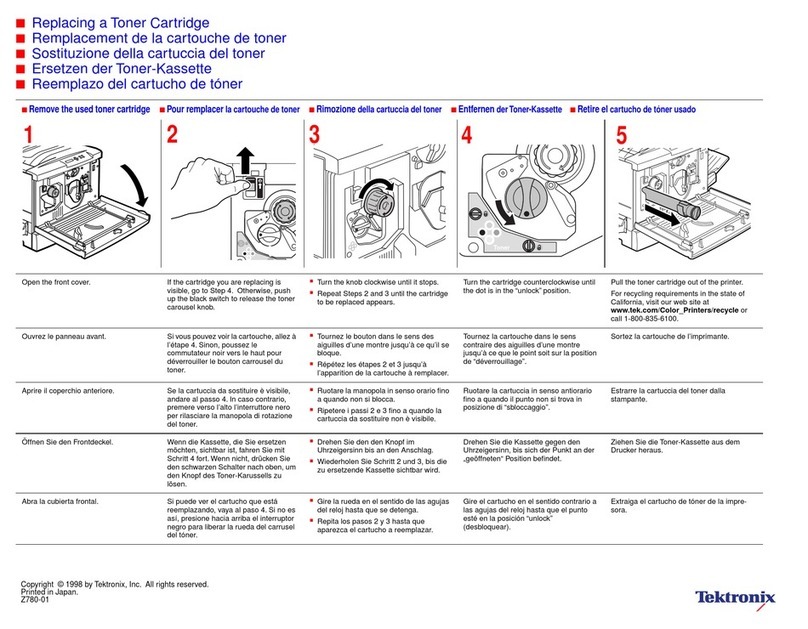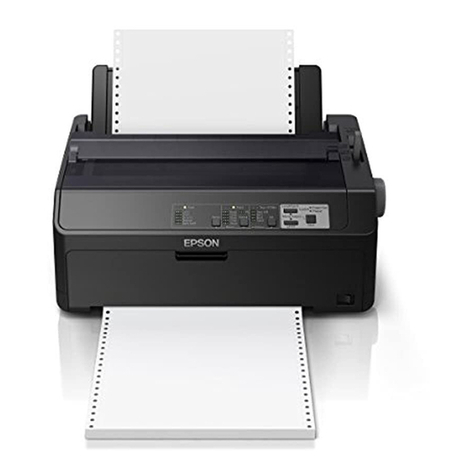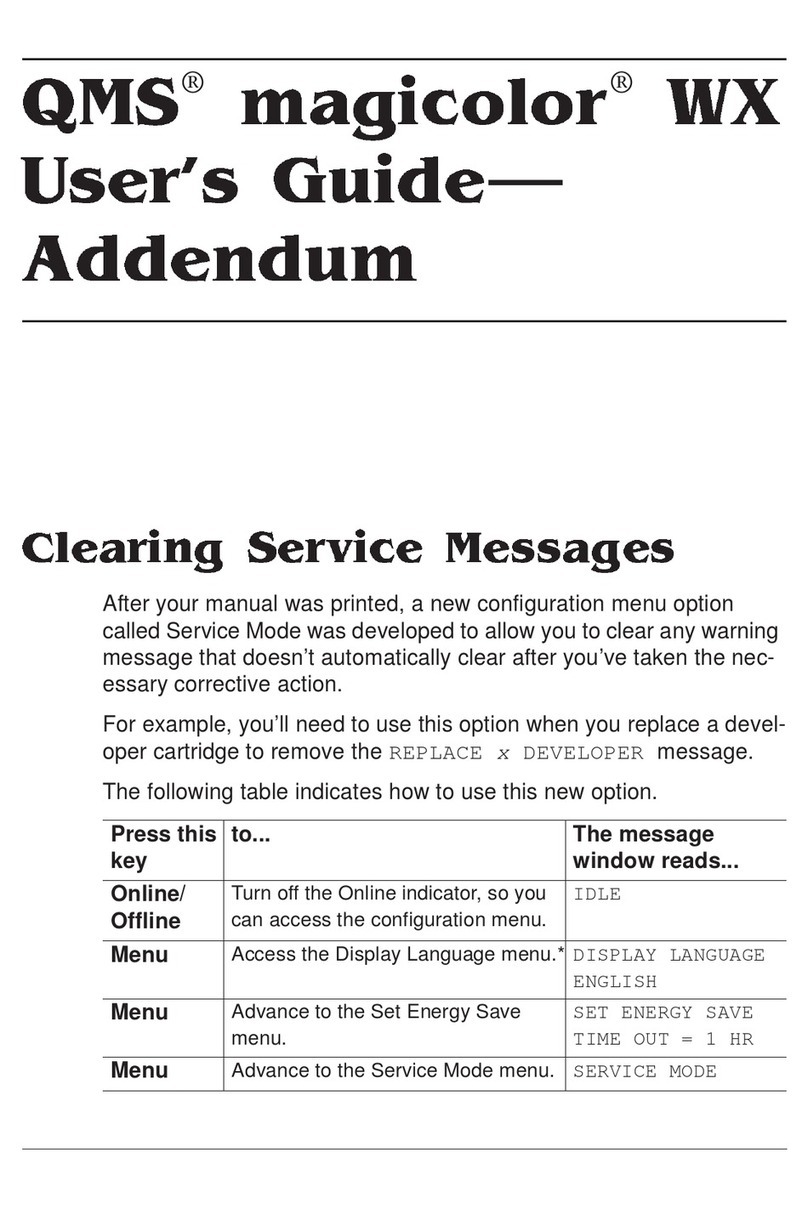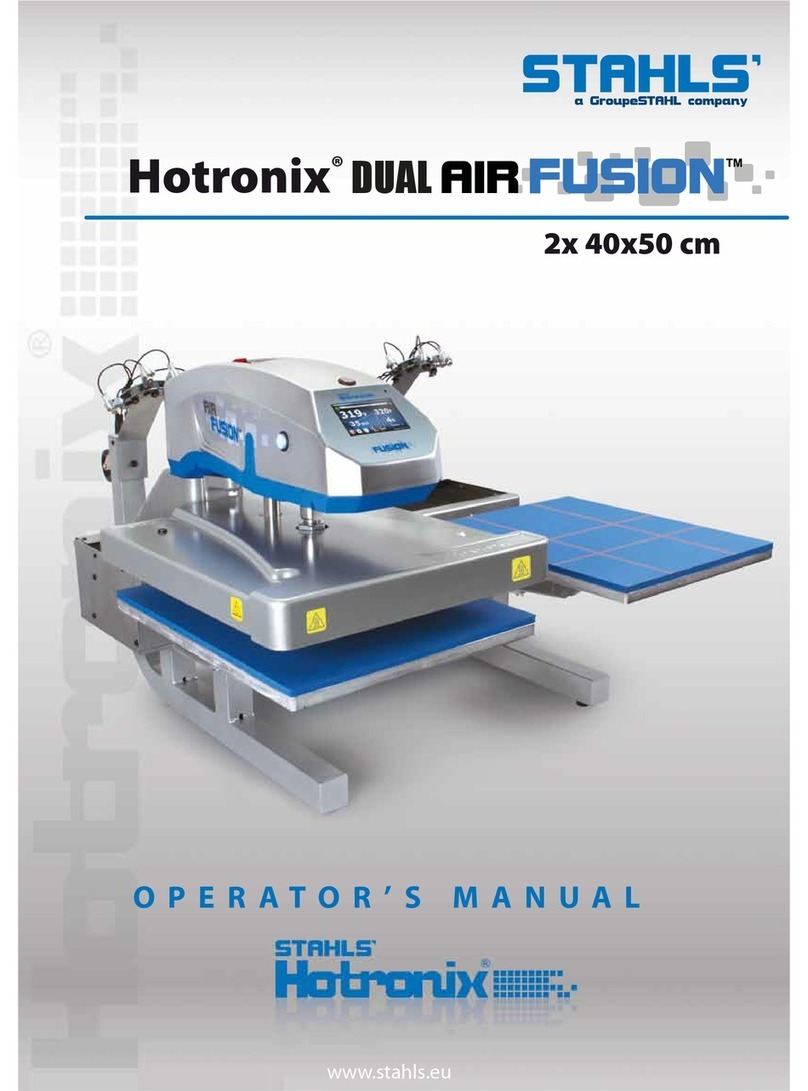HiTT POROUS HPL-100 Series User manual

1
POROUS
LARGE CAPACITY HAND PRINTERS
ALL MODELS
HPL-16006
OWNER’S MANUAL
INSTALLATION - OPERATION - MAINTENANCE
Hitt Marking Devices
3231 W. MacArthur Blvd., Santa Ana, CA 92704
PH: (714) 979-1405 FAX: (714) 979-1407
E-Mail: [email protected] Website: www.hittmarking.com

2
IMPORTANT NOTE
UNIVERSAL products are manufactured to exacting standards and every available step has been taken to assure your
complete satisfaction. It is most important, for best results, that you read and carefully follow the instructions contained in this
manual. Failure to do so may result in unsatisfactory performance, damage to the equipment and personal injury.
- LIMITED WARRANTY -
UNIVERSAL Porous Large Capicity Hand Printers are guaranteed to be free from defects in materials and workmanship
for a period of 90 days from the date of purchase. Components found to be defective during this time will be repaired free
of charge if returned to the factory. Damage resulting from use of improper inks, improper installation, or operation is not
covered under the scope of this warranty. For warranty service please contact our Customer Service Department.
PREFACE
SPECIFICATIONS
HPL-100 Series
HPL-200 Series
HPL-300 Series
HPL-400 Series
Indexing & Non-Indexing Models
Printing on Non-Porous Surfaces
Printing Dies
Metric Printing Dies
Ink Rolls
QUICK START
Pre-inking XF Neoprene Ink Rolls
Installing the Pre-inked Roll
Printing Die Positioning for Indexing Applications
Installing the Printing Dies
Optional Type Blocking Kit
Adjusting the Ink Roll / Die Face Contact Pressure
MAINTENANCE
Cleaning the Printer / Cleaning the Printing Dies
Pre-inking Microcell Rolls
PRINT DRUM INDEX MECHANISM MAINTENANCE
Print Drum Index Mechanism Disassembly/Assembly
Replacing Print Drum Index Springs
Removing & Replacing Index Block “B”
PARTS DIAGRAMS AND PARTS LISTS
TABLE OF CONTENTS
3
4
5
6
7
8
8
9
9
10
11
12
14
14
15
15
16
17
18
19
20
22

3
PREFACE
The specification section includes drawings with the basic dimensions of the printers, the net weights, maximum
die capacities, maximum print width and print drum circumferences. This section also lists the specifications for
the printing dies and an explanation of the indexing and non-indexing models.
PRINTER SPECIFICATIONS
1- Indexing (spot printing) and non-indexing (continuous printing) models with print areas up to 3-15/
16" x 17-1/2".
2- Universal’s die system allows text information to be set using individual characters or one piece logo
dies.
3 - Custom logo dies can also be produced from camera ready copy.
4 - Precision machined from aircraft grade aluminum alloys and stainless steel for mimimal maintanance
and superior long term performance.
5 - Baseplate has a black anodized finish for corrosion resistance.
6 - Permanently lubricated, sealed ball bearings which provide for extremely accurate, low friction drum
rotation.
7 - Stainless steel shafts for durability even in harsh environments.
8 - Indexing mechanism with dual compression springs mounted over stainless steel guide rods mini-
mizes spring breakage and provides unsurpassed indexing speed and accuracy.
The Universal HPL Hand Printer has been designed to print lot numbers, date codes, and text information on
cartons, web materials, and other conveyed products. Universal HPL Hand Printers are precision engineered to
give years of reliable service under the most demanding conditions.
QUICK START
SEE PAGE 11
This manual was written with a full understanding that very few people like to read manuals or have the
time to do so. To accommodate those who have little time to spare we have included a Quick Start
section which will get your printer operating in just a few minutes.
FEATURES

4
SPECIFICATIONS
HPL PRINTER SPECIFICATIONS
HPL-100 SERIES
Model Shown: HPL-100
NET WEIGHT: 6.1 LBS. (2.8 KG)
MAXIMUM DIE SIZE - US STANDARD: 1” (7 RIBS) X 16-15/16” LENGTH
MAXIMUM DIE SIZE - METRIC CODERS ONLY: 25.4 MM (7 RIBS) X 430.2 MM LENGTH
PRINT DRUM CIRCUMFERENCE: APPROXIMATELY 18" (457 MM) MEASURED AT DIE FACE
17.19”
(436.6 MM)
16.41”
(416.8 MM)
6.71”
(170.4 MM)
3.68”
(93.5 MM)
1.04”
(26.4 MM)
8.45”
(214.6 MM)
5.74”
(145.8 MM)
DUST COVER REMOVED
TO SHOW INDEX MECHANISM

5
SPECIFICATIONS
HPL PRINTER SPECIFICATIONS
HPL-200 SERIES
Model Shown: HPL-200
NET WEIGHT: 6.9 LBS. (3.1 KG.)
MAXIMUM DIE SIZE - US STANDARD: 1-15/16” (14 RIBS) X 16-15/16” LENGTH
MAXIMUM DIE SIZE - METRIC CODERS ONLY: 49.2 MM (13 RIBS) X 430.2 MM LENGTH
PRINT DRUM CIRCUMFERENCE: APPROXIMATELY 18" (457 MM) MEASURED AT DIE FACE
17.19”
(436.6 MM)
16.41”
(416.8 MM)
6.71”
(170.4 MM)
5.58”
(141.7 MM)
1.95”
(49.5 MM)
8.45”
(214.6 MM)
5.74”
(145.8 MM)
DUST COVER REMOVED
TO SHOW INDEX MECHANISM

6
NET WEIGHT: 8.0 LBS. (3.6 KG.)
MAXIMUM DIE SIZE - US STANDARD: 2-15/16” (21 RIBS) X 16-15/16” LENGTH
MAXIMUM DIE SIZE - METRIC CODERS ONLY: 74.6 MM (20 RIBS) X 430.2 MM LENGTH
PRINT DRUM CIRCUMFERENCE: APPROXIMATELY 18" (457 MM) MEASURED AT DIE FACE
HPL PRINTER SPECIFICATIONS
HPL-300 SERIES
Model Shown: HPL-300
17.19”
(436.6 MM)
16.41”
(416.8 MM)
6.71”
(170.4 MM)
6.58”
(167.1 MM)
2.9”
(73.7 MM)
8.45”
(214.6 MM)
5.74”
(145.8 MM)
DUST COVER REMOVED
TO SHOW INDEX MECHANISM
SPECIFICATIONS

7
NET WEIGHT: 9.1 LBS. (4.1 KG.)
MAXIMUM DIE SIZE - US STANDARD: 3-15/16” (29 RIBS) X 16-15/16” LENGTH
MAXIMUM DIE SIZE - METRIC CODERS ONLY: 100 MM (27 RIBS) X 430.2 MM LENGTH
PRINT DRUM CIRCUMFERENCE: APPROXIMATELY 18" (457 MM) MEASURED AT DIE FACE
HPL PRINTER SPECIFICATIONS
HPL-400 SERIES
Model Shown: HPL-400
17.19”
(436.6 MM)
16.41”
(416.8 MM)
7.58”
(192.5 MM)
3.94”
(100.1 MM)
8.45”
(214.6 MM)
5.74”
(145.8 MM)
DUST COVER REMOVED
TO SHOW INDEX MECHANISM
SPECIFICATIONS

8
SPECIFICATIONS
INDEXING AND NON-INDEXING MODELS
Universal HPL Hand Printers are available in both indexing and non-indexing models.
FIGURE 1
Indexing printers feature a print drum indexing mechanism
which provides print registration capabilities when carton print-
ing. When the printer is lifted off the surface, after the print
operation, the print drum automatically rotates back to the
same starting or “home” position. Printing with an indexing
printer will allow the imprint on each carton to be registered in
the same position relative to the position where the print drum
first contacts the carton.
STAINLESS STEEL
GUIDE ROD
COMPRESSION
SPRING
Non-indexing printers provide random print registration capabilities. These printers have print drums which
simply rotate on bearings and repeat the print at an interval equal to the circumference of the print drum. If your
application requires the print to be repeated at shorter intervals than the circumference print drum, duplicate sets
of dies can be installed on the print drum. Non-indexing printers are generally used for web printing applications
where the print drum stays in contact with the web over long distances.
PRINTING ON NON-POROUS SURFACES
Universal HPL Hand Printers are intended for use on porous surfaces, however, the use of slow drying alcohol
base inks is possible with the XF Neoprene Ink Rolls. Slow drying pigmented stencil inks such as Universal Type
D Ink and some of those made by other manufacturers will work in these printers. The XF Neoprene Ink Rolls are
not compatible with MEK solvent based inks and a number of other non-porous ink solvents. Some of these
solvents will casue extreme swelling of the ink rolls.
It is importatnt to note that even compatible alcohol based inks will dry out in the ink rolls if left on the printer for
extended periods of time. The ink rolls should be removed from the printer and stored in a sealed container after
each use. Regular re-inking of the roll will be necessary when using alcohol base inks in these units and and
occassional addition of ink solvent to the roll may be required to keep it working properly.

9
SPECIFICATIONS
FIGURE 2
BEARER RING
.015 - .016”
PRINTING DIE
DRUM COVER
FIGURE 3
RIBtype® PRINTING DIES
CODER MODELS DESIGNED FOR METRIC RIBtype® PRINTING DIES
Printing dies are manufactured to precision thickness tol-
erances which are very critical to the performance of these
coders. When installed, the face of the printing die should
extend only .015” - .016” beyond the radius of the Bearer
Rings as shown in Figure 3. Using dies that do not meet
the design specifications will result in poor print quality
and possible damage to the transfer roll.
Although there are several competitive rib backed die sys-
tems available, it is very important to note that they are not
all made to the same rib spacing or thickness specifica-
tions and they are not interchangeable.
Universal also offers Metric RIBtype® die systems for use in countries where metric character sizes are the
standard. The Metric dies are thicker and the rib spacing differs slightly from the standard printing dies therefore
the two versions are not compatible. To accommodate the differences, the print drums for Metric dies are
machined to a slightly different diameter from the U.S. versions.
The coder model numbers on Metric coders will have a “-T” suffix and the Metric Drum Covers have a distinct
pink color.
Universal HPL Hand Printers are designed to use RIBtype® printing
dies which have a molded rib backing. The ribs on the back of the die
snap into mating ribs in the Drum Cover on the print drum as shown
in Figure 4.
The standard printing dies are available in sets with many sizes and
character styles. The sets are a combination of individual alphabetic
and numeric characters or in sets containing numeric characters
only. These character sets or “sorts” can be used to make up text
messages and code numbers as necessary.
Printing dies are also available in “logo” form in which a complete text message, company logos or trademarks
are produced on a single piece of rib backed rubber. These “logo” dies are photographically reproduced from
black and white art work. Due to their unitized construction, these dies generally produce better print quality and
are much faster to change in the field. For details on ordering custom logo dies, please contact our Customer
Service Department.

10
SPECIFICATIONS
INK ROLLS
MICROCELL INK ROLLS - OPTIONAL
XF NEOPRENE INK ROLLS
Microcell ink rolls are the most durable rolls available on
the market today. This material is an extremely tough,
hard density urethane foam which will last up to a year or
more under normal conditions. The rolls are re-inkable
for maximum economy and are recommended for use
with Universal #1150 Ink for printing on corrugated car-
tons and other porous surface materials.
Universal’s XF Neoprene Ink Rolls are made from an ex-
tra firm density neoprene material. The extremely fine cell
structure of these rolls provides exceptionally good print
quality particularly when using small character printing
dies. Due to their greater ability to compensate for slight
die thickness variations, these rolls are also recommended
to correct print quality problems when multiple lines of text
are required.
Universal offers two ink roll options for the HPL Hand Printers. Each has a unique characteristic suitable for a
specific printing application. The printers are designed to accommodate both types of ink rolls without modifica-
tion. A detailed review of your printing requirements will determine the best choice of ink rolls for your particular
application.
FIGURE 4
Unless otherwise specified, XF Neoprene Ink Rolls are supplied with all new HPL Printers.
FIGURE 5

11
QUICK START
PRE-INKING XF NEOPRENE INK ROLLS
3- Using a round shaft or screwdriver, remove the roll from the
container. Roll the ink roll across a clean piece of paper or
cardboard to remove the excess ink.
Inks will stain clothing, furniture, carpeting and your hands. Rubber gloves should be worn during the following
procedures.
1- Remove the dry roll from the plastic bag. Pour ink into a clean
container large enough to accommodate the size of the ink
roll.
2- Place the roll on it’s side into the container. Using your finger
tips, press down firmly on the side of the roll. Continue to
press down on the roll while rotating it in the container. Flip
the roll over in the container and repeat the process until all of
the ink is absorbed.
As you press down on the ink roll you are forcing the air out of
the roll material which allows the ink to be absorbed.
It is important to the performance of the printer that the ink
roll is fully saturated but not dripping wet.
For a 1-1/8” face roll pour approximately 4 ozs. of ink into the
container, for a 2” face - 8 ozs., 3” face - 12 ozs. and 4” face - 16
ozs. The ink rolls must be pre-inked manually prior to installation
on the printer.
FIGURE 6
FIGURE 7
FIGURE 8
Universal HPL Hand Printers are shipped from the factory fully assembled and, unless otherwise specified,
includes a dry XF Neoprene Ink Roll. The ink roll must be manually pre-inked prior to use. The initial inking
of any dry roll is critical to the preformance of the Printer. Follow the inking instructions below to insure that your
rolls are properly inked.
If you received a pre-inked ink roll with your printer, skip this procedure and go to the next page for instructions on
roll installation.

12
QUICK START
INSTALLING THE PRE-INKED ROLL
1- To install the ink roll, first loosen the 8-32 set screw in the
cover retaing knob using a 5/64” hex wrench.
2- Remove the cover retaining knob.
FIGURE 10
FIGURE 11
Inks will stain clothing, furniture, carpeting and your hands. Rubber gloves should be worn during the following
procedures.
FIGURE 9
All pre-inked rolls are shipped oversaturated with ink, before installation the excess ink must be removed. Roll
the ink roll across a clean piece of paper or cardboard to remove the excess ink.
FIGURE 12
3- Remove the ink roll cover.
4- Loosen the plastic knob and slide the ink roll mount away from
the print drum.

13
6- Replace the roll cover. Note that the notch in the cover must
be aligned with the tab on the base plate.
QUICK START
FIGURE 13
FIGURE 14
FIGURE 15
FIGURE 16
5- Place the ink roll on the Axle. Do not allow the ink roll to con-
tact the Print Drum Bearer Rings during installation.
7- Replace the cover retaining knob.
8- Lightly tighten the 8-32 set screw in the cover retaining knob
using a 5/64” hex wrench.

14
Non-indexing models of the HPL Hand Printer do not offer print registration capabilities, therefore mounting the
printing dies at a specific location on the print drum is not important. On indexing machines, the position of the
die on the print drum will determine the location of the print on the carton.
The drawing illustrates the best die position for
carton printing. Note that the leading edge of the
printing die should be positioned, rotationally, up-
stream of the ink roll. When the print drum is
placed against the susface of the carton and
pushed forward, the drum begins to rotate in a
counter-clockwise direction. The printing die trav-
els a short distance and then contacts the ink roll
where ink is applied to the die face. When the
die contacts the carton, the mark is applied. The
printer should remain in contact with the surface
of the product and be pushed forward through
one complete revolution of the print drum. When
it is lifted off the surface of the product, the print
drum will automatically return to the same start-
ing position.
INK ROLL
LEADING EDGE OF DIE
FIGURE 17
PRINTING DIE POSITIONING FOR INDEXING APPLICATIONS
Install the Printing Die on the Print Drum by aligning the
ribbed backing on the die with the mating drum cover on
the Print Drum. Press firmly until they are completely en-
gaged.
Individual character codes or text messages are installed
in a mirror image of normal written text. In other words
install in a right to left direction as shown. When printed,
codes or text installed in this orientation will print in normal
left to right order.
INSTALLING THE PRINTING DIES
To make die installation easier, moisten a sponge with water containing a small amount of liquid dish detergent.
Lightly moisten the back of the printing die and then immediately press the die into the drum cover.
Note: Do not apply too much liquid or the dies will slip during printing.
FIGURE 18
QUICK START

15
When using small individual characters with only a two or
three rib backing, an optional Type Blocking Kit (Stock No.
UR-BK) should be used to support the leading and trail-
ing ends of the type as shown.
Characters which have only a 2 or 3 rib backing do not
have the stability of the larger character sizes when
snapped into the drum cover. Adding the rib backed type
blocks on either side of the code will provide added stabil-
ity and prevent the characters from shifting during print-
ing. The Type Blocks are not as thick as the Type and will
not pick up ink from the Ink Roll.
OPTIONAL TYPE BLOCKING KIT
FIGURE 19
1- With the Dies installed on the print drum, rotate the print drum
to a position where the printing dies will contact the ink roll.
Then loosen the position adjusting knob and move the ink roll
into contact with the face of the printing dies. Tighten the posi-
tion adjusting knob when the ink roll contacts the face of the
printing die with just enough pressure to fully ink the die face.
The ink roll should never be positioned so close that it con-
tacts the Drum Covering on the Print Drum or the relief areas
of the printing die.
ADJUSTING THE INK ROLL / DIE FACE CONTACT PRESSURE
The pressure the ink roll exerts on the face of the printing dies should be just enough to rotate the ink roll and
completely ink the face of the dies as they pass during printing. Excessive contact pressure will cause smudging
of the impression, premature failure of the ink roll, and restriction of the print drum rotation.
FIGURE 20
QUICK START

16
If proper installation procedures are followed, the maintenance of your new printer will be limited to periodic
cleaning to remove dust and any ink residue which may accumulate during operation. The frequency of this
maintenance procedure is dependent upon the environmental conditions and proper inking of the printer. To
remove ink contamination from the surface of the printer, moisten a soft cloth with a light solution of detergent and
water and wipe away any contamination. During printing, the dies will tend to pick up both airborne dust and any
dust or dirt on the surface of the material being printed. After some period of use, the accumulation of contami-
nates on the dies will cause degradation of the print quality. When this happens, the dies should be cleaned or
replaced. Cleaning the dies is a very easy process and, excluding excessive wear to the die face, will restore the
print quality of the die to like new condition.
CLEANING THE PRINTER / CLEANING THE PRINTING DIES
Universal #1150 Ink is a glycol base ink which can be easily cleaned from the dies without the use of solvents.
The easiest method of cleaning dies is to scrub the die face with a toothbrush using liquid dish detergent and
water. Since the ink residue will stain, it is highly recommended that you wear a pair of rubber gloves, safety
glasses and an apron to protect your clothing. (Naturally, the toothbrush will never be suitable for oral hygiene
use after this process.)
1- Place the contaminated die on top of several layers of paper
towels to absorb the excess liquid. Pour just enough soapy
water on the face of the printing die to cover the die face.
2- Using the toothbrush, carefully scrub the face of the die to
remove the contamination and old ink as shown. Add more
soapy water as necessary and repeat the process until the die
is clean. Rinse the dies in clean water.
3- Blot the surface of the die with a clean paper towel to dry and
reinstall the clean dies on the printer.
FIGURE 21
FIGURE 22
FIGURE 23
MAINTENANCE

17
The optional Microcell Ink Roll is available for specific applications. Because of the harder density of this material
the inking process of the roller must be done slowly. The following instructions will guide you through the proper
inking process to insure maximum performance of your printer.
Microcell Ink Rolls are designed for use with Universal #1150
Ink for marking on porous surfaces. The ink rolls must be pre-
inked manually prior to installation on the printer.
2- Carefully place the ink roll into the ink. Do not force the roll to
submerge. The top surface of the roll must remain dry during this
process.
3- As the roll absorbs ink it will begin to sink into the container. When
the top surface becomes fully saturated the roll has absorbed as
much ink as possible. Using a round shaft or screwdriver, remove
the roll from the container.
4- To remove excess ink from the roller, use a round shaft or screw-
driver, and roll the inked roller across a clean piece of paper or
cardboard.
1- Remove the ink roll from the plastic bag. Fill a clean dry container
with enough ink to allow the ink roll to fully submerge.
The roll should be allowed to float, undisturbed, in the container
of ink. Leaving the top surface of the roll dry allows air to
escape as the ink is absorbed from the bottom. Forcing the
roll under the surface of the ink will prevent the roll from absorb-
ing ink properly.
This process normally takes 20-25 minutes for a 1-1/8” face roll,
longer for the larger rolls. Proper inking of a dry roll is critical to
ensure good performance of the roll.
FIGURE 24
FIGURE 25
FIGURE 26
FIGURE 27
Inks will stain clothing, furniture, carpeting and your hands. Rubber gloves should be worn during the following
procedures.
PRE-INKING MICROCELL ROLLS
1-1/8" face roll will hold approximately 4 ounces (118 ml.).
2" face roll will hold approximately 8 ounces (236 ml).
3" face roll will hold approximately 12 ounces (354 ml).
4" face roll will hold approximately 16 ounces (473 ml).
Approximate roll capicity when fully saturated:
MAINTENANCE

18
4- Lift the spring block assembly straight up off the stain-
less steel posts.
Important Note: The Print Drum Axle is machined with
thread relief so the tip of the set screw will not damage
the threads. To completely remove the Index Ring from
the Axle, the Brass Tip Set Screw must be loosened at
least 2 full turns to prevent damage to the threads.
1- Using a 5/64” hex wrench, loosen the Nylon Tip Set Screw
located in the top rim of the Print Drum and remove the
dust cover.
FIGURE 28
FIGURE 29
FIGURE 30
3- Using a small screwdriver, remove the two E-Rings from
the stainless steel posts to enable removal of the spring
block assembly.
FIGURE 31
2- To relieve the spring tension on the index mechanism, ro-
tate the Print Drum approximately 3/4 turn. The Index Com-
pression Springs will now be in the fully extended (relaxed)
position.
FIGURE 32
.04
BRASS TIP
SET SCREW
PRINT DRUM AXLE
RECESS AREA
PRINT DRUM INDEX MECHANISM DISASSEMBLY / ASSEMBLY
PRINT DRUM INDEX MECHANISM MAINTENANCE

19
PRINT DRUM INDEX MECHANISM MAINTENANCE
FIGURE 33
FIGURE 34
FIGURE 35
5- Using a 1/8" hex wrench, loosen the Brass Tipped Set Screw
located in the side of the Index Ring. This screw must be turned
counterclockwise at least two full revolutions.
6- Remove the Index Ring from the axle by turing it in a Counter-
Clockwise direction. If the Index Ring does not turn freely, loosen
the set screw an additional turn as indicated in Step 5 above.
7- The print drum can now be lifted off the axle.
FIGURE 37
FIGURE 36
1- Holding onto the Index Assembly Block “A”, pull the Index Assembly
Block “C” off the guide shafts. Remove the Drum Index Springs
2- Install new Index Springs over the stainless steel guide shafts and
replace Index Block “C”.
3- Reinstall the Index Spring Assembly in the Print Drum with the
large end of the white bushings facing up towards the open end of
the Print Drum.
4- Reinstall the two Snap Rings.
REPLACING PRINT DRUM INDEX SPRINGS

20
FIGURE 39
Before replacing Index Block “B”, ensure that the Index Ring
is properly adjusted.
2- Lift Index Block “B” straight up to remove.
The head of the Index Assembly Mounting Screw engages the T-Slot
in Index Block “B”. This mounting design facillitates height adjust-
ment of the Index Block during reassembly.
REMOVING AND REPLACING INDEX BLOCK “B”
1- To remove Index Block “B” from the Print Drum, roll down the
Drum Cover directly behind the Index Block to expose the In-
dex Assembly Mounting Screw. Using a screw driver, turn the
Mounting Screw in a clockwise direction until the Index Block
becomes loose and can be removed.
FIGURE 38
If the Indexing Assembly Block “B” is removed during disassembly it must be realigned using the fol-
lowing procedure.
FIGURE 40
3- Install the Index Ring by threading it onto the axle (turning it in a
Clockwise direction) until it contacts the shoulder of the axle.
PRINT DRUM INDEX MECHANISM MAINTENANCE
This manual suits for next models
3
Table of contents

